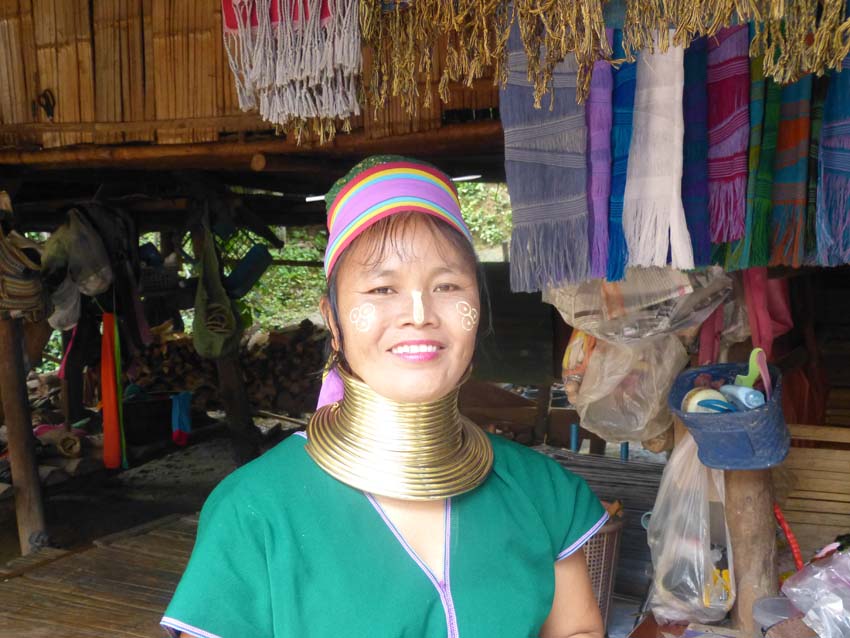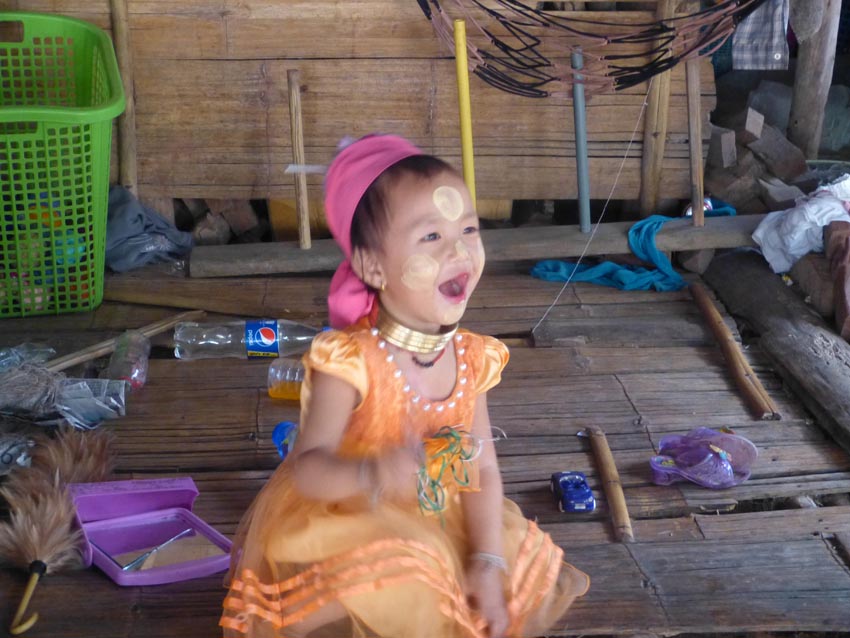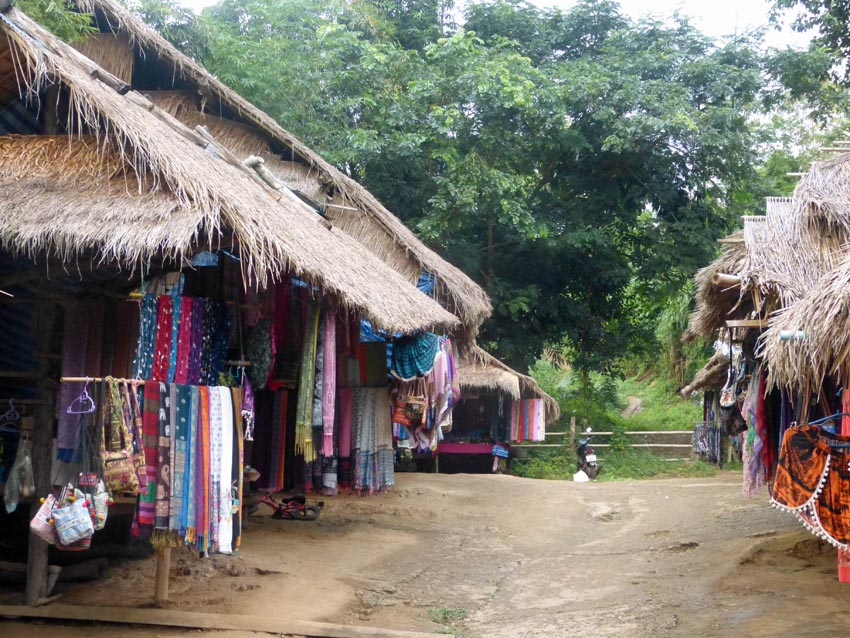Last Updated on June 24, 2019 by PowersToTravel
I chose to visit the Kayan Long Neck women.
It is easy to feel ethical while strolling respectfully through a Buddhist temple. I admire the workmanship and ask our guide about the meaning of murals or carvings.
However, today I took a risk and while I still have not resolved the ethical conundrum which my research put me into, I feel more educated and empathize with the object of my tourism.
What am I talking about? I’m talking about a trip to see the “Kayan Long Neck Women” in the hills around Chiang Mai. This was but one of several different adventures planned for the day.
Why the ethical concern?
I read the concerns others have regarding the use of a minority immigrant refugee group as a tourist attraction. In particular I read https://www.marieclaire.com/politics/news/a1400/kayan-long-neck-thailand/ , an article which is now ten years old.
The Long Neck Women are a tribe of the Karen people from Myanmar (Burma) who fled their country across the border to Thailand, due to military persecution. They now live in poverty in the mountains north of Chiang Mai. The political conflict and military retribution occurred in the 1980s, so the refugees have been living in Thailand for more than thirty years now.
What makes them different from many other refuge groups is their amazing metal rings the women wear around their necks, beginning at the tender age of five.
The rings are an original cultural decoration dating from long before they became a tourist attraction. The rings are in a way similar to the colorful beads worn by the Masai women of the Serengeti, beautiful and culturally unique, such that people of other cultures are quite willing to pay to see them. Bom said that some believe that the historical reason for the rings is to protect the woman from the tigers in the jungle. He said that the woman would have to go to the river to fill their water jugs and do their laundry, and that it is then that the women are most vulnerable. The rings protect their necks from the first pounce of a tiger, who grab their prey around the neck.
But there are two big differences between the cultural decoration of the Masai and the Karen. The Kayan rings are heavy and confining. They are not gentle floating beads to be tossed about over half-naked breasts – they are terribly heavy and now-a-days instead of protecting the woman, limit the movement, health and comfort of the woman. Secondly, the Kayan woman have no other source of income than the tourist baht generated by their wearing of their traditional costume. The choice is literally wear or not eat.
Our guide brought us to the village, where he paid the entrance fee, so I’m not exactly sure how much it cost. Our little family group strolled around, Greg and myself, Greg’s daughter and son-in-law and Greg’s two grandchildren. No other bus loads of people arrived, and I think that bus-loads vs. no bus-loads environment makes all the difference between how an activity is perceived.
We stopped at a house and sales-stall and smiled at the woman, and her small girl, who already was wearing a few rings around her neck.
The woman was gracious, smiling and demonstrated weaving, and allowed us to take pictures. We always pointed to our cameras, gestured openly and when the woman nodded, took the pictures. We nodded, bowed and smiled in thanks.
 Greg’s granddaughter Makayla played with the little girl, applying the traditional Burmese light flesh-toned make-up on the little girl’s face, in the typical circular fashion.
Greg’s granddaughter Makayla played with the little girl, applying the traditional Burmese light flesh-toned make-up on the little girl’s face, in the typical circular fashion.
It was a peaceful and very pleasant time. We knew that these were refugees, had no legal standing in Thailand, but Bom explained that they are able to stay in their “home” area (province? district?) and receive a Thai education. He explained that they were not free to move to the city or change districts, that they are illegal refugees.
He also explained that he had been bringing tourists to visit the village for several years now, and that in years past the village was larger. The general belief is that many villagers are now returning to Myanmar, since that is the only place they can go. I sincerely hope that that is true.
Knowing the ethical concerns about our planned activity, I purposely did not buy my Chiang Mai souvenirs at the night market the night before. As we strolled the village we saw similar souvenirs in the Long Neck Village. I’m not sure what items, if any, were actually made by the woman. However, I purposely spent a good portion of our Thai souvenir money there, buying scarves and even a (probably Chinese made) sculpture of a Long Neck Woman, to place alongside our Masai woman and warrior at home.
If the villagers were to return to Myanmar, I can’t believe their physical comfort or health would drastically improve – we have been to Myanmar and seen its poverty. I have to believe that these villagers are actually receiving better here in Thailand, because they have the opportunity of a Thai education which those in Myanmar don’t benefit from.
However, it is hard for a Westerner myself, who has always been free to pursue happiness, to see people who aren’t free to pursue. Perhaps in Myanmar they would then be free to move to the city to pursue other employment?
The most I could do at that moment was buy generously. Does buying just continue the human-zoo / tourism cycle or does it help the woman to increase their standard of living and health?
I just don’t know. But they gave me a glimpse of a strange, historic and beautiful culture which is slipping away from our modern cookie-cutter technological world. They provided a moment to pause and consider my own freedom.
Related Links
Check out this article of mine too:
Thailand Travel Blog – Itinerary, Impressions and Diabetic Travel Tips











